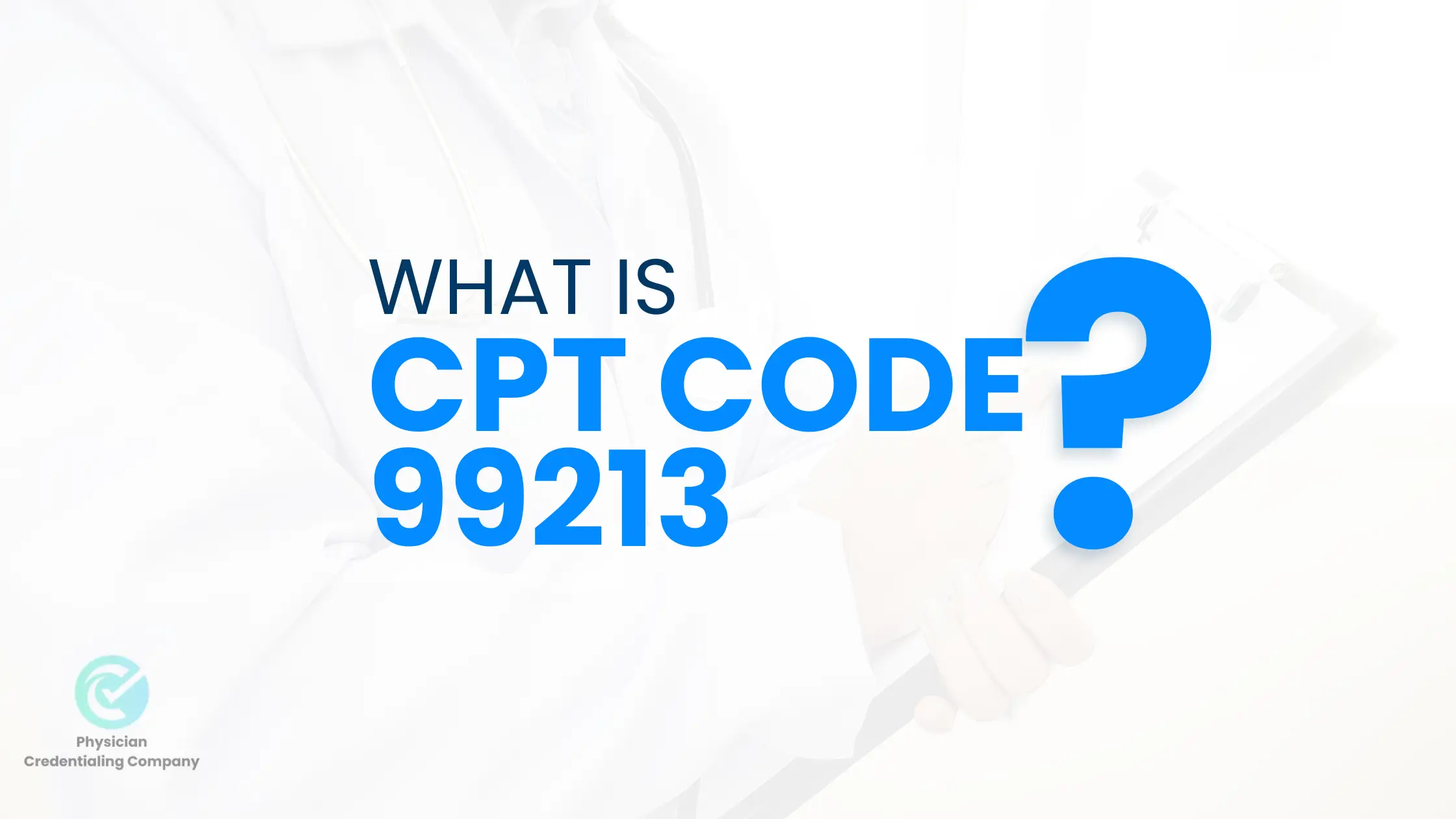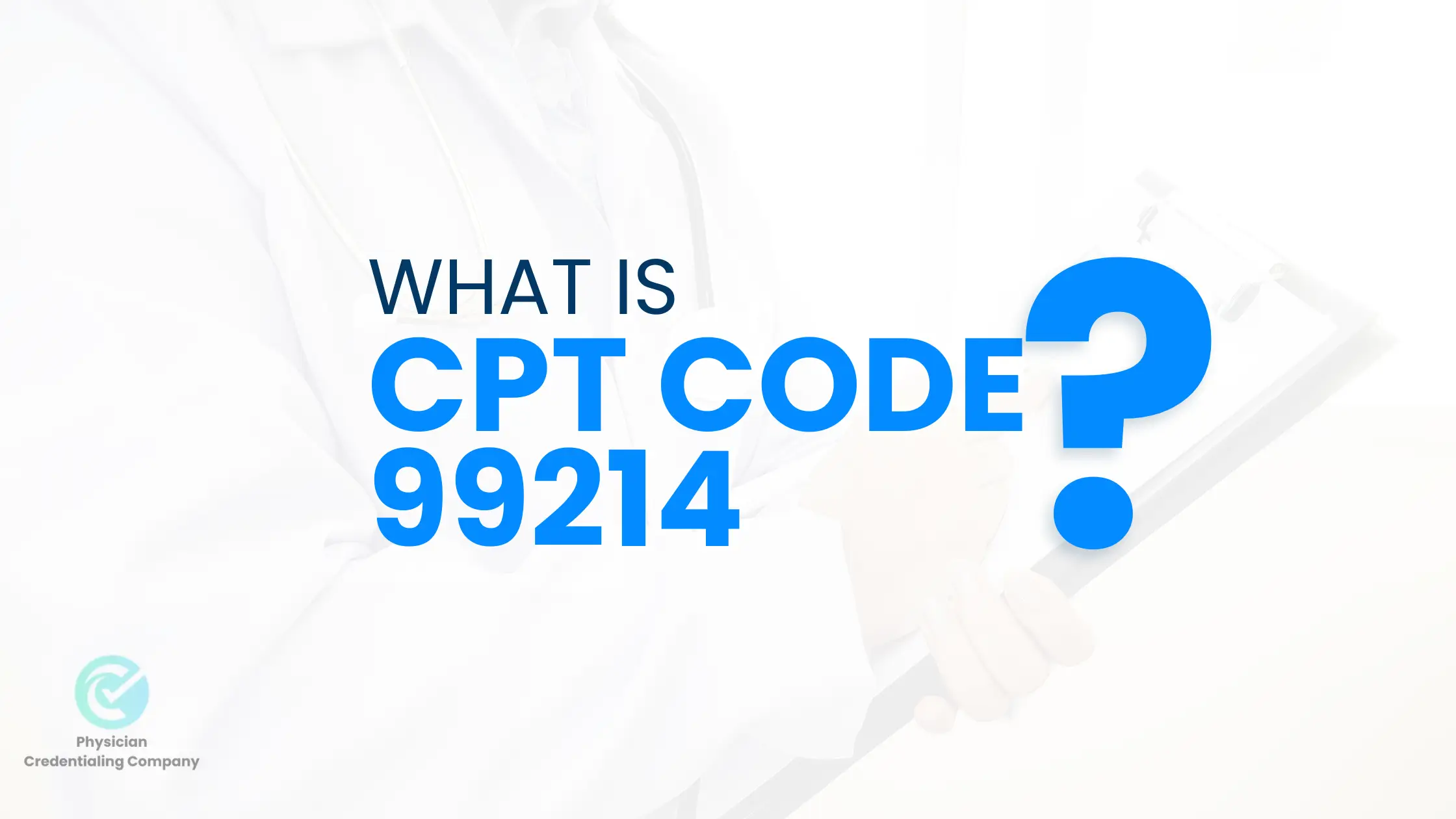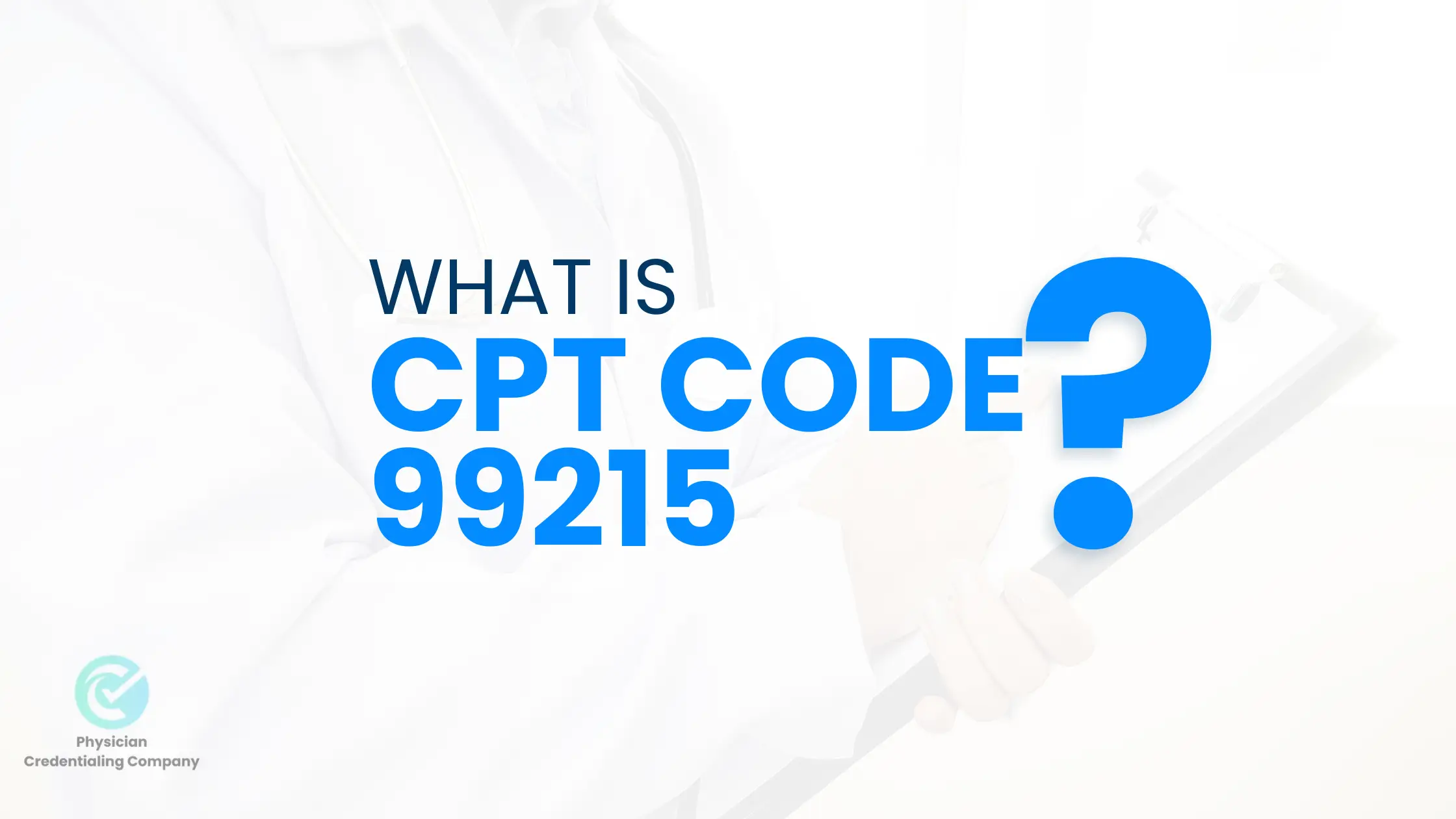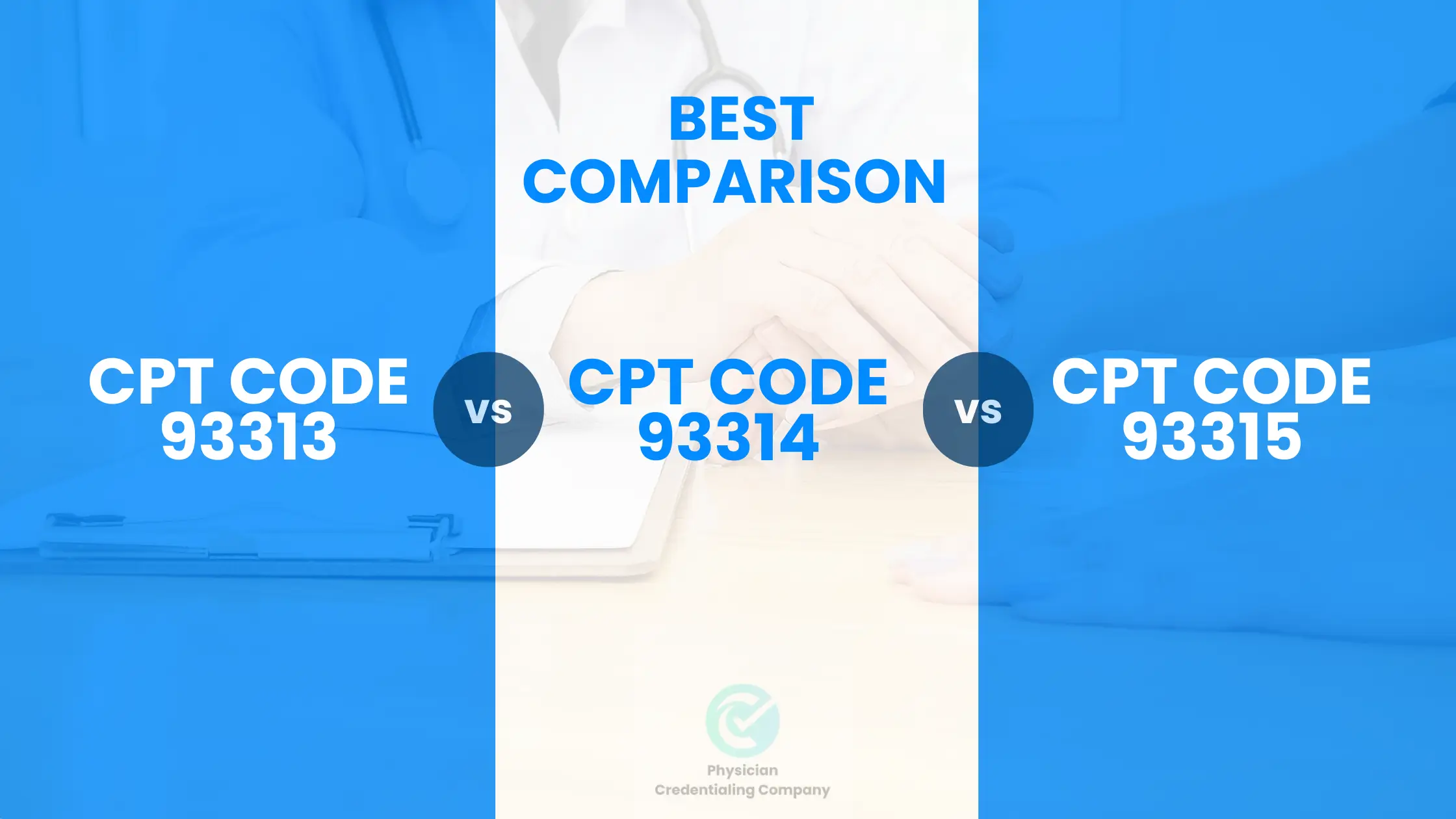Assigning CPT codes for the rendered medical services is a crucial step in the medical coding and billing process. CPT (Current Procedural Terminology) codes for the evaluation and management of E/M services are more complex considering the time spent with patients, the complexity of disease and history, and the role in decision-making. These factors decide which CPT codes for E/M services will be chosen and billed. In case of errors, there can be halts in the billing process, leading to financial instability. CPT codes 99213, 99214 and 99215 are important to understand if you deal in office or outpatient department services.
In this article, we will discuss the key differences between different E/M codes. We will also learn about billing and reimbursement requirements and best practices for documentation.
What are E/M CPT Codes?
CPT Codes are a standardized set of medical codes to describe medical, surgical, and therapeutic services rendered by healthcare professionals. These codes are introduced by the American Medical Association (AMA) to ensure accurate and comprehensive reporting of healthcare services. Each code represents any specific medical service, and instead of describing the whole service, only a specific code is mentioned in the medical bills. This also maintains universality among healthcare professionals, patients, and insurers.
Evaluation and management CPT Codes are used to describe the service provided by the healthcare professionals in the office or outpatient department. These codes define the communicative and cognitive services. There are two kinds of patients representing doctors: new patients and established patients. New patients are those who have not seen a healthcare professional for the last three years, and established patients are those who have consulted physicians in the last three years. There are separate codes for these patients.
What is CPT Code 99213?

CPT Code 99213 is the low-level E/M code and it is defined for less severe and minor health problems. This code is only for the established patients describing moderate-level office visits and less complex decision making roles. As compared to other E/M codes, this code has a lower reimbursement rate as it is assigned for less severe problems.
There are some protocols that should be met for billing the CPT Code 99213 to comply with the medical billing policies and regulations. The main factor which defines this code is the time duration the patient spends with the physician. Estimated time for CPT Code 99213 is 15 minutes.
If we talk about the history and examination, these factors should be problem-focused or extended problem-focused. It means that history and examination should only be done of the body system relevant to the patient’s chief complaints. Medical decision-making (MDM) should also be less complex, and risk to the patient should be minimal. Less complex MDM means that there are fewer differential diagnoses, and treatment options are limited.
Examples of Common Uses of CPT Code 99213
- Minor Illness: Less severe diseases like flu, sore throat, and food poisoning come under this category. Doctors take the relevant history and do the examination of a specific body system. Diagnosis is also less complicated, and physicians prescribe supportive care, which is a limited treatment option. This is billed under the code 99213.
- Routine Follow-Up For Chronic Conditions: Patients with chronic diseases like hypertension and diabetes visit healthcare professionals, and there is a slight increase in blood pressure or sugar level without disease leading to complications is billed under code 99213. In this case, physicians check the dietary routine, recommend blood tests, and prescribe medicines.
- Prescription Refills: E.g, Asthmatic patients come to the hospital for a follow-up and refill their inhalers. Physicians check that asthma is well managed and renew the prescription.
What is CPT Code 99214?

This code defines the time duration and more complex medical conditions. The time duration of a patient visit with the doctor is around 25 minutes for 92214. This code deals with the moderate complexity of medical decision-making and multiple diseases in a single visit. The reimbursement rate for this code is higher than 92213 as it includes more face-to-face time spent between patient and physician, more complex decision-making, and complicated disorders.
The protocols concerned with CPT Code 92214 include detailed medical history, past history, family history, and socioeconomic history. History related to all body organs is taken, and distinguished features are noted. The same is the case with the examination for code 99214. All body systems are checked and examined for any potential findings.
If we talk about the last thing in code 99214, medical decision-making is a bit complex, and it includes multiple differential diagnoses, tests, and investigations. Treatment plans are made on the basis of the prognosis of the disease. Also read our blog for 99214 and g0463.
Examples of Common Uses of CPT Code 99214
- Multiple chronic conditions come under this category. E.g., a patient comes with diabetes and hypertension for follow-up or for the first time. In this case, blood tests are performed. Cholesterol levels, sugar levels, and blood pressure are checked, and medications are recommended. Side effects of medications, age factors, and other risk factors are kept in mind while making a prescription.
- If a patient with a chronic condition comes to OPD with another disease related to the same body system, then this is also covered under the CPT Code 92214. We can take the example of a patient having obstructive lung disease presented with shortness of breath to the physician. The physician will order a lung X-ray pulmonary function test to find the cause of shortness of breath and prescribe medicines.
What is CPT Code 99215?

CPT Code 99215 is the highest level E/M code required in most complex and serious diseases. Overall patient-doctor interaction duration is around 40 minutes in the office setting. This code defines office visits rather than outpatient visits. Detailed history and examination are required to bill for this code. Reimbursement rates are much higher than other E/M codes and physicians must check the eligibility criteria of patients before rendering the medical services.
Past medical and surgical history, detailed history of presenting illness, drug history, socioeconomic history, family history, and systemic history are taken in this category. Whole body examination, including general physical exam and all body organ exams, is required to bill for 99215. Medical decision-making is a very complex and crucial step in this regard. Extensive review of patient’s data, multiple diagnosis evaluation and patient health risks are considered before making any decision.
Examples of Common Uses of CPT Code 99215
- Management of severe complex conditions: Disorder of one organ damaging the other organ leads to serious health concerns. Root cause should be dealt with at once to save the life of the patient. Patients with congestive heart failure and kidney disease presented with edema in the legs are managed and billed under CPT Code 99215. Without management, patients can have complete heart failure or pulmonary edema, worsening the condition more. Multiple lab tests, coordination between the cardiologist and neurologist, and emergency management are concerns in this case.
- Counseling for life-threatening conditions: Patients who are newly diagnosed with serious ailments like cancer come to the physician’s office for counseling and treatment plans, spend more than 40 minutes with the doctor, and are billed with code 99215.
Key Differences between CPT Codes 99213 Vs 99214 Vs 99215:
Here is the table summarizing the key differences between CPT Codes 99213, 99214, and 99215:
Criteria | CPT Code 99213 | CPT Code 99214 | CPT Code 99215 |
Time spend | 15 minutes | 25 minutes | 40 minutes |
MDM complexity | Low | Moderate | High |
History and exam | Problem-focused | Detailed | Comprehensive |
Risk to patient | Low | Moderate | High |
Reimbursement Rates for E/M CPT Codes
CPT Codes 99213, 99214, 99215 are billed according to the insurance companies policies. Medicare, Medicaid, and other private insurance companies have different reimbursement rates for each E/M code. Healthcare professionals should remain updated with policies and regulations regarding the CPT Code 99213 reimbursement rates before rendering medical services.
CPT Codes | Reimbursement rates | ||
| Medicare | Medicaid | Commercial insurance rates |
99213 | $89.39 | $45.69 | $95 |
99214 | $126.07 | $68.97 | $95 |
99215 | $177.47 | $102.52 | $162 |
Medicare and Medicaid are the federal programs for specific people and you can see their rates are a bit lower than the commercial insurance rates. On the other hand, medicare and Medicaid programs offer other benefits and legal protection to healthcare professionals.
It is important for the healthcare professional to check the eligibility criteria and insurance plan of the patient before starting medical services in an office or outpatient department setting.
Medical Billing and Coding Strategies For E/M Codes
Providers should pay attention to the strategic measures to increase the efficiency of medical billing and coding processes to maximize revenue generation and increase patient care. Below are some strategies which help to reach the goal:
1. Follow Time Guidelines
It is important to track the exact time spent between the patient and doctor to avoid overcrowding and under coding. The meeting, which involves the counseling and coordination of care, should be documented for higher E/M codes like 99214 or 99215.
2. Document Everything
It is the thumb rule in medical billing to document every detail from patient presentation to physician till the management plan is provided to the patient. Medical chief complaints, time spent, detailed medical history and examination findings, details of MDM, and management plans should be noted to comply with rules and regulations. Documented information also favors successful audits. Electronic health records (EHR) should be used to save information and streamline the process.
3. Assessment of Risk
CPT Codes 99213, 99214, and 99215 are different from each other depending on the severity of the disease and patient health risks. Higher risk conditions are billed with 99215. Moderate risk conditions are billed with 992114 and 99213 bills risk-free situations.
4. Stay Updated On Guidelines
Policies and regulations are introduced periodically regarding medical billing and coding. To effectively undergo these processes, providers should remain updated with new policies and comply with all regulations. This reduces the claim denial ratio and generates more revenue for the healthcare setting to flourish.
Conclusion
Evaluation and management CPT Codes 99213, 99214, and 99215 hold a significant place while generating medical bills for the services provided to patients in OPD and office settings. CPT Code 99213 describes the less severe conditions including routine infections and follow-ups concerned with only one organ system. There is no health risk and treatment options are also limited. While for code 99214, multiple conditions with moderate severity are billed. Linked organ systems are examined, and detailed history is noted.
Duration extends to 25 minutes in comparison to 15 minutes for code 99213. CPT Code 99215 describes very high-risk, severe, and life-threatening diseases. Doctor-patient meetings last for more than 40 minutes in this category. All protocols for each E/M code should be considered while generating the medical bills. Effective techniques should be adopted for a smooth and effective medical billing process.
FAQ - People Also Asks
CPT Code 99213 refers to the assessment of medical conditions of the established patient during office visits. It is not considered as a preventive service.
Yes, Additional services such as lab work, imaging, or minor procedures can be billed in addition to these E/M CPT Codes. Providers can put additional codes in the same bill or in a separate bill.
No, new patient visits require comprehensive history and exam documentation. This increases the workload and they are billed under different E/M codes (99202–99205).

